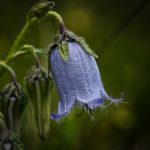Are you looking to add a splash of beauty and color to your garden? Look no further than iris varieties! These stunning flowers come in a wide range of colors and patterns, making them a popular choice among gardeners. Whether you have a spacious garden or limited space, there’s an iris variety that’s perfect for you.
One of the most popular iris varieties is the tall bearded iris. With their majestic flowers and tall stalks, these irises are sure to make a statement in your garden. They come in a variety of colors, from vibrant purples and blues to soft pinks and whites. Tall bearded irises require a bit of care, but their stunning blooms are well worth the effort.
If you’re a beginner gardener or simply looking for a low-maintenance option, consider planting Siberian irises. These hardy plants are perfect for those who want beautiful flowers without the fuss. Siberian irises come in a range of colors, including shades of blue, purple, and white. They thrive in moist soil and can tolerate a variety of growing conditions.
For a touch of elegance in your garden, Japanese irises are the way to go. These irises feature unique flower shapes and vibrant colors, adding a touch of sophistication to any space. To grow Japanese irises successfully, you’ll need to create the ideal growing conditions, including moist soil and partial shade.
Looking for an iris variety that can withstand hot and dry conditions? Spuria irises are your answer. These tall and graceful plants are drought-tolerant, making them perfect for gardens in arid climates. Their delicate flowers come in a variety of colors, including yellows, purples, and whites.
If you have limited space or want to add irises to your containers, dwarf irises are a fantastic choice. These compact yet beautiful plants come in a range of colors, including blues, purples, and yellows. Dwarf irises are easy to care for and can add a pop of color to any small garden or container.
Not a fan of the bearded irises? Beardless irises offer a unique alternative. Louisiana and Pacific Coast irises are two popular types of beardless irises. These irises come in a variety of colors and can be grown successfully in a range of growing conditions. They add a touch of charm and uniqueness to any garden.
As you can see, there are plenty of iris varieties to choose from, each offering its own unique beauty. Whether you prefer tall bearded irises, low-maintenance Siberian irises, or elegant Japanese irises, there’s an iris variety that’s perfect for your garden space and growing conditions. So go ahead and add some color and beauty to your garden with these stunning flowers.
Tall Bearded Iris
Tall bearded irises are a favorite among gardeners due to their stunning flowers and tall stalks. These majestic plants come in a wide range of colors and patterns, allowing you to add a pop of vibrant beauty to your garden. From deep purples and blues to bright yellows and pinks, there is a tall bearded iris variety to suit every taste and preference.
When it comes to caring for tall bearded irises, it’s important to provide them with the right conditions. These plants thrive in full sun, so make sure to plant them in a spot that receives at least six hours of direct sunlight each day. Well-drained soil is also crucial for their growth, so consider adding organic matter or compost to improve the soil’s drainage.
Additionally, tall bearded irises require regular watering during their active growing season. However, it’s important to avoid overwatering, as this can lead to root rot. A general rule of thumb is to water the plants deeply once a week, allowing the top few inches of soil to dry out between waterings.
When it comes to fertilizing tall bearded irises, a balanced fertilizer with equal amounts of nitrogen, phosphorus, and potassium is recommended. Apply the fertilizer in early spring and again after the plants have finished blooming. Be sure to follow the manufacturer’s instructions for application rates.
To keep your tall bearded irises looking their best, it’s important to remove faded flowers and any dead or damaged foliage. This helps prevent disease and promotes healthy growth. In late summer or early fall, you can also divide the plants to prevent overcrowding and promote better blooming.
With their stunning flowers and majestic presence, tall bearded irises are sure to make a statement in any garden. Whether you’re a seasoned gardener or just starting out, these beautiful plants are a must-have for adding color and elegance to your outdoor space.
Siberian Iris
If you’re looking for a low-maintenance iris variety, consider planting Siberian irises. These hardy plants are perfect for beginner gardeners due to their easy care requirements. Siberian irises are known for their resilience and ability to thrive in various growing conditions.
One of the advantages of growing Siberian irises is their wide range of colors. From deep purples and blues to vibrant yellows and whites, there is a Siberian iris variety to suit every garden palette. These beautiful flowers will add a pop of color and elegance to any landscape.
When it comes to maintenance, Siberian irises are relatively fuss-free. They are less prone to diseases and pests compared to other iris varieties. These plants are also adaptable to different soil types, making them a versatile choice for any garden.
If you decide to plant Siberian irises, make sure to provide them with well-draining soil and ample sunlight. They prefer moist conditions but can tolerate some drought once established. Regular watering and occasional fertilization will keep these plants thriving.
In conclusion, Siberian irises are an excellent choice for beginner gardeners or anyone looking for a low-maintenance iris variety. With their wide range of colors and adaptability, these hardy plants will bring beauty and charm to your garden without requiring too much effort.
Japanese Iris
Add a touch of elegance to your garden with Japanese irises. These stunning plants are known for their unique flower shapes and vibrant colors, making them a beautiful addition to any garden space. Japanese irises come in a variety of colors, including shades of purple, blue, white, and yellow, allowing you to create a visually striking display.
To ensure the Japanese irises thrive in your garden, it’s important to create the ideal growing conditions. These plants prefer moist soil and partial shade, so be sure to choose a location that provides these conditions. Additionally, Japanese irises require regular watering, especially during dry spells, to keep the soil consistently moist.
When it comes to planting Japanese irises, it’s best to do so in the early spring or late summer. Dig a hole that is wide and shallow, and place the rhizome (the thickened stem) horizontally in the hole, making sure the top of the rhizome is level with the soil surface. Cover the rhizome with soil, water thoroughly, and add a layer of mulch to help retain moisture.
Japanese irises are relatively low-maintenance plants, but they do benefit from regular fertilization. Use a balanced fertilizer in early spring and again after the flowers have finished blooming. This will help promote healthy growth and vibrant blooms.
In conclusion, Japanese irises are a fantastic choice for adding elegance and beauty to your garden. With their unique flower shapes and vibrant colors, they are sure to be a standout feature. By providing the ideal growing conditions and proper care, you can enjoy the stunning blooms of Japanese irises for years to come.
Spuria Iris
Are you searching for an iris variety that can thrive in hot and dry conditions? Look no further than spuria irises. These remarkable plants are known for their exceptional drought tolerance, making them a perfect choice for gardens in arid regions. With their tall and graceful stature, spuria irises add an elegant touch to any landscape.
When incorporating spuria irises into your garden, it’s essential to provide them with the ideal growing conditions. These plants prefer well-drained soil and full sun exposure to flourish. Additionally, they appreciate good air circulation to prevent the development of diseases. Be sure to space them adequately to allow for proper airflow.
To ensure the best performance of your spuria irises, it’s crucial to water them deeply but infrequently. This encourages their roots to grow deeper into the soil, making them more resilient to drought conditions. Mulching around the plants can help retain moisture and regulate soil temperature.
With their vibrant colors and architectural form, spuria irises make a striking statement in any garden. Consider planting them in borders, rock gardens, or even as standalone focal points. Their drought tolerance and unique beauty make them a valuable addition to any landscape.
Dwarf Iris
If you have limited space or want to add irises to your containers, dwarf irises are the perfect choice. These compact yet beautiful plants are a great addition to any garden. There are several varieties of dwarf irises to choose from, each with its own unique characteristics and colors.
When selecting dwarf irises for your garden, consider the growing conditions and the overall aesthetic you want to achieve. Some popular varieties include:
- Miniature Dwarf Bearded Iris: These tiny irises grow to a height of only 8 inches and produce delicate flowers in various colors.
- Standard Dwarf Bearded Iris: Slightly taller than the miniature dwarf variety, these irises reach a height of about 15 inches and offer a wider range of colors and patterns.
- Border Bearded Iris: These irises are slightly taller than the standard dwarf variety, growing up to 18 inches. They are known for their vibrant colors and ability to thrive in containers.
To care for dwarf irises, provide them with well-draining soil and a sunny location. Water them regularly, but be careful not to overwater as they are prone to root rot. Deadhead the spent flowers to encourage new blooms and remove any diseased or damaged foliage. Fertilize them in early spring and again after they have finished blooming to promote healthy growth.
By choosing dwarf irises, you can enjoy the beauty of these stunning flowers even in small spaces or containers. With proper care, they will thrive and add a burst of color to your garden.
Beardless Iris
Are you not a fan of the bearded irises? No worries! Beardless irises offer a unique and captivating alternative for your garden. These irises are known for their smooth and sleek petals, which give them a distinctive appearance. They come in various types, including Louisiana and Pacific Coast irises, each with its own characteristics and beauty.
The Louisiana iris is a stunning variety that thrives in wet and humid conditions. With their vibrant colors and elegant blooms, they can add a touch of charm to any garden. On the other hand, Pacific Coast irises are native to the western coastal regions of North America. They are known for their delicate flowers and adaptability to different growing conditions.
To successfully grow beardless irises in your garden, it’s important to provide them with the right care and conditions. Here are some tips:
- Choose a location that receives partial shade or full sun, depending on the specific iris variety.
- Ensure the soil is well-drained and rich in organic matter.
- Water the plants regularly, keeping the soil evenly moist but not waterlogged.
- Apply a balanced fertilizer during the growing season to promote healthy growth.
- Protect the plants from pests and diseases by monitoring them regularly and taking appropriate measures.
By following these guidelines, you can enjoy the beauty of beardless irises in your garden and create a unique landscape that stands out.
Frequently Asked Questions
- What are the best iris varieties for my garden?
The best iris varieties for your garden depend on your personal preferences and growing conditions. Some popular choices include tall bearded irises, Siberian irises, Japanese irises, spuria irises, dwarf irises, and beardless irises. Each variety has its own unique characteristics and requirements, so it’s important to choose the ones that will thrive in your specific garden environment.
- How do I care for tall bearded irises?
Tall bearded irises require well-draining soil and full sun exposure to thrive. They should be planted in late summer or early fall, with the rhizomes placed just below the soil surface. Regular watering is necessary during the growing season, but overwatering should be avoided. Deadheading spent flowers and dividing the rhizomes every few years will help maintain the health and vigor of the plants.
- Are Siberian irises low-maintenance?
Yes, Siberian irises are known for their low-maintenance nature. They are tolerant of a wide range of growing conditions and can thrive in both full sun and partial shade. These hardy plants require regular watering during their first year of establishment but are generally drought-tolerant once established. They also benefit from dividing every few years to prevent overcrowding.
- What are the ideal growing conditions for Japanese irises?
Japanese irises prefer moist soil and full sun to partial shade. They thrive in areas with consistently moist or even boggy conditions, making them a great choice for water gardens or near ponds. Regular watering is important, especially during dry periods. Adding organic matter to the soil and mulching around the plants can help retain moisture and provide the necessary nutrients.
- Can spuria irises tolerate hot and dry conditions?
Yes, spuria irises are known for their tolerance of hot and dry conditions. They are native to Mediterranean regions and have adapted to thrive in arid environments. These tall and graceful plants require well-draining soil and full sun exposure. While they can tolerate drought, regular watering during their active growth period will help promote better flowering.
- How do I care for dwarf irises?
Dwarf irises are perfect for containers and small garden spaces. They require well-draining soil and full sun to partial shade. Regular watering is necessary during their active growth period, but they should be allowed to dry out between waterings to prevent root rot. Deadheading spent flowers and dividing the bulbs every few years will help maintain their compact size and promote blooming.
- What are the different types of beardless irises?
Beardless irises offer a unique alternative to the bearded varieties. Some popular types include Louisiana irises and Pacific Coast irises. Louisiana irises are known for their vibrant colors and adaptability to wet or boggy conditions. Pacific Coast irises are native to the western coastal regions of the United States and require well-draining soil and partial shade. Each type has its own specific care requirements.



